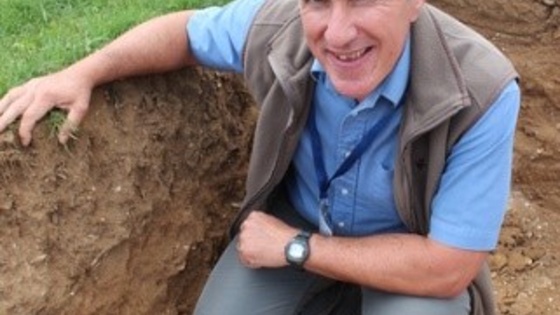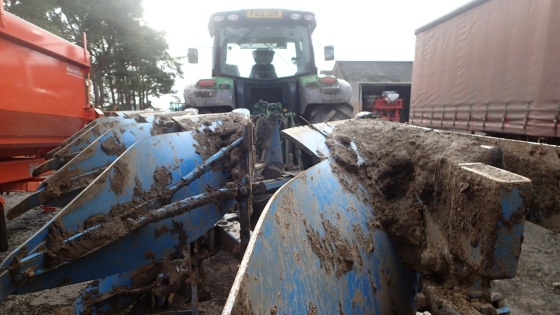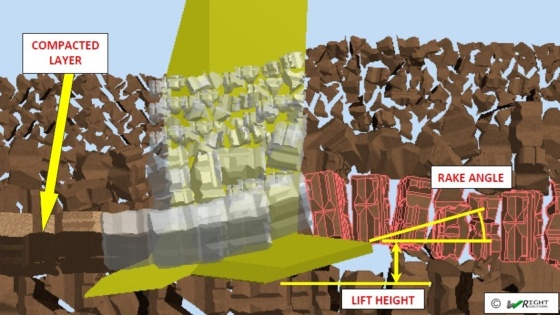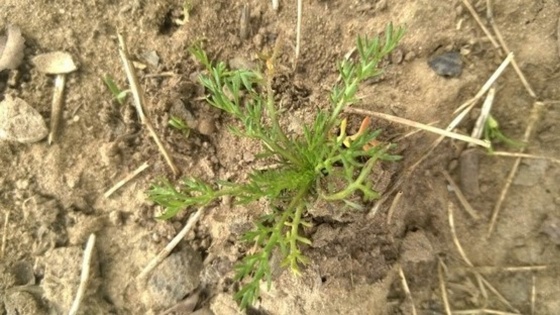Cultivation Principles - Scentless Mayweed
After harvest mayweed plants may still be flowering and producing seed, cultivations to kill plants will reduce the seed return to the seedbank.
If considerable numbers of fresh seeds have been shed the soil should not be cultivated leaving seeds on the surface to be predated or to germinate.
Cultivations will enhance the emergence of buried (old) seeds by exposing them to light. The annual decline with cultivation has been calculated at 43%. The dilemma is that tillage will reduce predation and germination of fresh seeds but will stimulate old seeds to germinate, so knowledge of the position and number of seeds in the profile is vital.
In spring crops a cultivation prior to drilling will expose seed to light and these weeds should be controlled before drilling. Delaying drilling of spring crops will probably increase the number of weeds germinating before the crop emerges due to higher temperatures.
Conventional, Strip Tillage and Direct Drilling are all appropriate when considering this weed. Note detailed comments on establishment.

Cultivation Principles
Our Expert
Philip Wright
Philip Wright was trained in agricultural engineering at Silsoe College, Bedford, gaining an Honours Degree in 1979. He became registered as a Chartered Engineer with the Engineering Council in 1990, and is a member of the Institution of Agricultural Engineers, the American Society of Agricultural and Biological Engineers and the British Society of Soil Science. Philip was technical director of Simba International (now Great Plains), the UK leading manufacturer of cultivations machinery, having been employed there since 1979.
As part of the BASF panel of Arable Weed Control experts, Philip will advise on cultivations and drilling techniques specifically targeting the control of various key weeds, for example how they respond soil disturbance, where the weed seed bank needs to be for best control [inverted/buried, or in the upper zone of maximum residual herbicide efficacy], plus the ideal scenarios for effective control – delayed drilling, spring cropping, other cultivations and residue/canopy management options, ideal cropping rotation sequences, etc.

Residue spreading and shallow stale seedbed cultivation by raking
Rotation
There are options to control mayweed in most crops. Lengthen the rotation by growing broad leaved as well as cereal crops in order to avoid repeated applications of the same herbicides and allow the use of different herbicides and hence modes of action to control the weeds.
Other cultural controls
The best strategy for a single year fallow would be to leave the stubble in the autumn undisturbed to maximise predation, use shallow cultivations to encourage germination and control weeds germinating in the major autumn and late spring emergence flushes.
Residue Management: Ensure even spread of residues across field and a good chop of straw to maximise herbicide efficacy and avoid unnecessary cultivations. Straw chopper knives need changing/reversing regularly – often 3 or more times a season.
Where appropriate (e.g. when direct drilling with appropriate drill into high residue levels) leave a longer stubble height. Stubble mulching of high stubbles can be used where straw needs time to become brittle after harvest.
Residue spreading and shallow stale seedbed cultivation by raking combined with surface rolling, or shallow discing/rolling is effective to manage residues, control slugs and create the best conditions for weed stimulation. Flushes should be controlled by glyphosate as needed. Ultimate cultivation depth to be just greater than the drilling depth for the following crop, ideally ≤ 5cm. Consolidate after tillage to maintain moisture in the stale seedbed. Surface consolidation is essential after shallow tillage, and through to depth pressing plus surface consolidation is needed following deeper tillage.
Ploughing is the alternative to shallow surface disturbance by fully inverting and burying the surface seed bank. This should be done one year in 5 or more. Effective burial by:
(i) Suitably narrow furrow width (30/35cm on heavier soils) and share width < furrow width
(ii) Sensible forward speed
(iii) Appropriately set skimmers post plough pressing to close the surface
(v) Pre-cultivation shallow if needed so soil/straw contact of the buried residues allows efficient breakdown and good rates of water movement through the profile.
Maintain seed bank horizons by controlled surface disturbance of all operations. Mixing weed seeds to variable depths reduces efficacy of residual herbicides and prolongs the germination period for weeds.
Loosening as needed by low rake angle winged tines with adequate lift height for conditions and depth worked. This controlled vertical fissuring also minimises disrupting the weed seed bank horizons. Aim to establish a following crop ASAP after loosening (cover crop if spring drilling next main crop) to stabilise the resulting structure created.
NOTE: Effective loosening is vital where structure is likely to reduce or inhibit moisture infiltration levels.

NOTE: Effective loosening is vital where structure is likely to reduce or inhibit moisture infiltration levels. Poor drainage reduces competitiveness of the following crop. Consider headlands and the main field areas separately where loosening is needed as in many cases loosening depths are different, or not required across the whole field.
AT ALL COSTS avoid:
1. Deep non- inversion mixing
2. Re-inversion before 5 or more years
3. Lower depths of disturbance when cultivating than during follow-on spring drilling
4. Failure to consolidate after soil disturbance as this will lose moisture and adversely affect germination potential of the weed seeds

